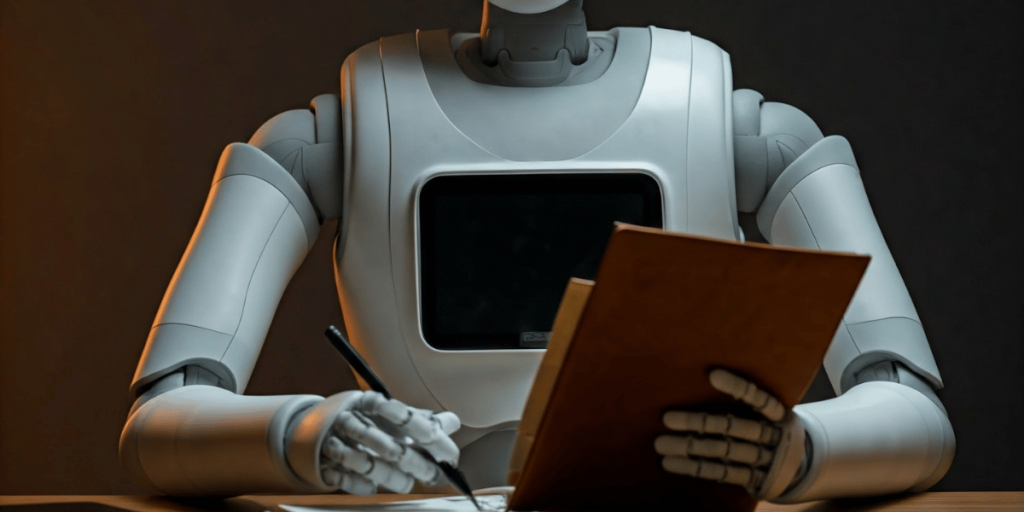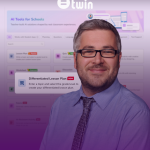This blog was last updated on 7 August 2025
This blog is presented by Twin Science, a global education technology company empowering educators through AI-enhanced learning solutions.
What Is Curriculum Misalignment with AI and Why Does It Matter?
Are today’s AI tools really designed for my school’s curriculum? Teachers everywhere, including you, want to bring the excitement of AI in education into their classrooms. But many quickly realize a common challenge: most AI tools and content don’t fit easily into local or national curriculum requirements. This may create a gap, leaving such as yourself unsure how to deliver AI literacy without losing focus on existing STEM objectives or hands-on learning.
If you’re asking, “How can I use AI meaningfully without straying from what I’m supposed to teach?” you’re not alone.
Educators like you need learning solutions that bridge curriculum goals and the real-world skills your students need. This is why solutions like those from Twin Science are designed not just to meet standards, but to support you in creating a more engaging and relevant classroom, right from day one.
Start using classroom-ready tools that make integrating AI simple and relevant from day one.
How Can You Align AI Learning with Your Curriculum?
How do I teach AI without sacrificing curriculum standards? The key is to map AI literacy and STEM topics to your curriculum’s learning outcomes. Start by identifying existing units, such as problem-solving in math, or data interpretation in science, where AI concepts naturally fit. Then, use teacher AI tools that are designed to plug into standard classroom activities.
For example, many educators report higher engagement when using STEM solutions like those from Twin Science for hands-on experiments in circuits or robotics. This approach means you’re not “adding more”, you’re enhancing what’s already required, using edtech learning solutions to spark curiosity and critical thinking.

What Practical Steps Can Teachers Take Right Now?
As AI becomes a daily part of student life, it’s essential to equip classrooms now. How can you start using AI in your classroom today, without a full curriculum rewrite?
1- Start Small: Choose one lesson or project where AI can add real value, such as using an AI-powered science simulation or letting students build simple machine learning models.
2- Leverage Teacher-Friendly Tools: Platforms like Twin Education Solutions are designed for educators, making it easy to introduce AI concepts without extra prep.
3- Connect to Real-World Applications: Highlight how AI and STEM shape the world, helping students see the relevance beyond exams.
4- Use Peer-Reviewed Guidance: Tap into resources from trusted organizations to stay updated on classroom-tested methods.
Lucky for you, Twin Science includes all four steps. Start using classroom-ready AI tools that support your teaching goals and student engagement quickly and effectively.

How Does Hands-On Learning Bridge the Gap?
Can AI be hands-on, not just digital? Absolutely. Research shows that hands-on learning remains essential for deep STEM understanding. By incorporating physical tools, real data sets, and group problem-solving, you foster both AI literacy and teamwork.
Teachers using Twin Science’s STEM kits find that hands-on experiences help students connect abstract AI ideas to tangible outcomes, preparing them for both academic and real-world success.
Twin’s learning vision is to make this experience personal for every learner, active rather than passive, and always rooted in real-world purpose. You’ll find that even small moments of hands-on success can spark curiosity, build resilience, and inspire your students to become creative problem solvers, qualities that matter far beyond exams.
Ready to Align AI with Your Curriculum?
Fitting AI into your curriculum doesn’t have to be a struggle. By choosing the right AI tools for teachers and focusing on hands-on STEM activities, you can make AI literacy accessible and relevant, no curriculum overhaul needed. You can access these tools now:




